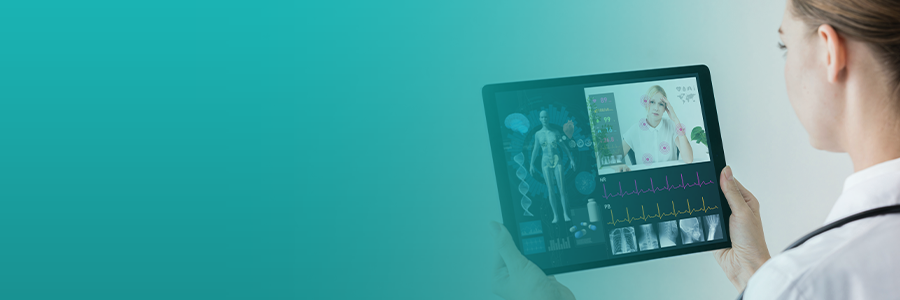
The modern world has never experienced a global pandemic with consequences as far-reaching as COVID-19. Over the last several weeks, consumers, businesses and healthcare professionals have operated under intense, fast-moving conditions, relying on mobile devices more than ever before.
While the healthcare industry has been notoriously slow to fully implement mobile technology, no other industry has experienced a shock as severe. Worldwide, hospitals already filled to capacity are becoming overwhelmed with more sick patients. Frontline doctors are running low on vital supplies, leaving those that don’t have the virus feeling isolated.
Mobile technology is emerging as a business-critical tool for both frontline healthcare workers and the community at large, enabling the delivery of essential care, real-time communication, tracking the spread of the virus and managing inventory for in-demand supplies.
A recent Forrester study revealed 38% of healthcare providers believe patients consider quick and convenient service from their medical team as their top priority. Moreover, 28% of healthcare providers believe patients want timely and ongoing communication about their health.
For healthcare professionals to continue meeting urgent patient needs, the implementation of mobile technology can provide the reassurance that patients require to feel cared for during times of uncertainty. However, the healthcare sector cannot simply deploy mobile devices at a large scale without first considering how they will manage, maintain and provide support to the workers using these devices.
A connected mobility strategy that includes business-critical tools is essential for healthcare organizations to manage and secure mobile and IoT devices in the field, while also being able to remotely diagnose and troubleshoot tech issues, build line of business (LOB) apps quickly and deliver actionable insights.
Here are four key strategies the healthcare sector can adopt when using mobile technology to deliver quality patient care:
1) Telehealth provides convenience and accessibility
Telehealth services are becoming an effective and sustainable solution for self-screening and patient support in the wake of COVID-19. When patients would rather not leave their homes to visit the doctor’s due to social distancing precautions, mobile technology can provide the ability for video conferencing and live web chat between doctors, nurses and patients. In a recent SOTI survey, which looked at consumer perception of physician mobile apps, a considerable 38% of patients indicated they prefer to utilize telehealth services to communicate with medical professionals vs. seeing them in person.
2) Eliminating cumbersome, outdated processes
The coronavirus crisis is also bringing to the forefront several outdated processes in the healthcare sector – from pen and paper documentation to the heavy use of fax machines. These are not only cumbersome and time-consuming for medical professionals, but can be dangerous for the patient if critical information is not immediately available at the care providers’ fingertips. Mobile technology that enables healthcare organizations to convert manual processes into LOB mobile apps can help eliminate mundane tasks, such as manually recording patient information, by having that data readily accessible on a mobile device.
3) Centralizing health records digitally to ensure security and ease of use
Mobile technology can help healthcare organizations digitally store patient health records to ensure all information is kept secure and easily accessible. When annual doctor visits are delayed because of mandatory isolation and an overloaded healthcare system, medical professionals can easily access patient records to review their medical history, monitor prescription refills, and keep all information about their patients on a compliant and secure device.
4) Personalizing the patient experience
People have busy schedules with work, family and other life demands; mobile technology can help streamline various administrative tasks when interacting with healthcare staff.
Results from the SOTI survey found the top three functions that patients use mobile apps for include:
- Scheduling appointments (70%)
- Viewing lab results (52%)
- Requesting prescriptions (40%)
Day-to-day tasks are made easier with mobile technology and provide patients with a more positive healthcare experience, with relevant and timely information about their health available when they need it. Instead of scheduling time to speak with their doctor about lab results, for example, they can know the information in advance and be prepared to go through an action plan during their next visit.
Mobile technology enables more seamless communication, real-time information sharing and streamlining of administrative tasks that benefits both patients and physicians. In fact, 75% of consumers from the survey said that physicians who integrate mobile technology provide a faster and more convenient experience; a win-win for everyone. Additionally, the survey revealed that 54% of patients believe physicians who leverage mobile technology cut down on physician wait times, while 57% prefer to communicate with physicians and office staff through mobile apps vs. calling the doctor’s office directly.
Critical technology for critical healthcare
Mobile technology is being leveraged to create operational efficiencies throughout the healthcare sector. Despite a global pandemic being the catalyst for many organizations – including those outside of healthcare – to begin adopting mobile technology, there are still businesses who have yet to fully realize the value of app-enabled processes, connected mobile devices and data that provides actionable insights.
Healthcare professionals who leverage mobility are better prepared to quickly respond to patient needs and are also uniquely positioned to serve the needs of patients during times of crisis. Beyond the global coronavirus pandemic, mobile technology will continue to empower medical staff to provide high quality care to patients even when in-person visits are not possible, and when they are needed most.



